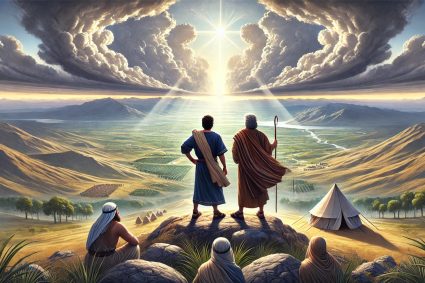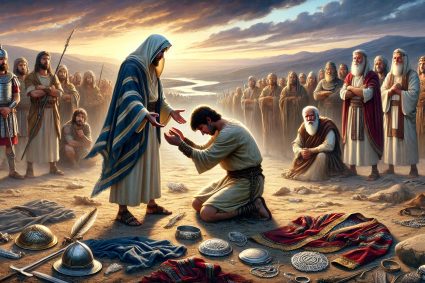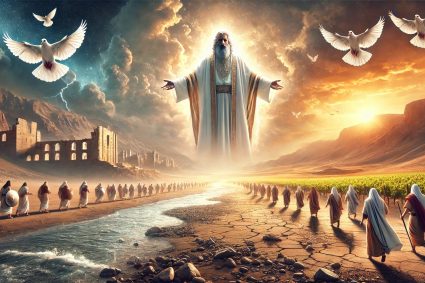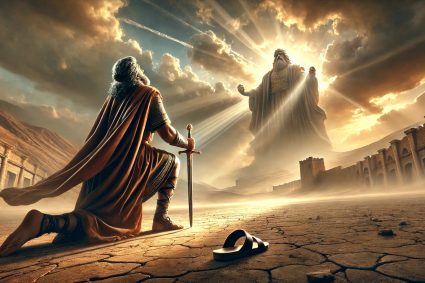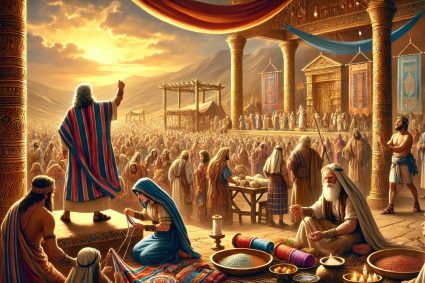
Series EXODUS with Pastor Mark Finley
Lesson 5.Passover
Passover: God Delivers with Grace and Judgment
Lesson 5 takes us into the dramatic climax of the ten plagues and the institution of the Passover feast. In the midst of judgment and suffering, God reveals His saving grace: a lamb is sacrificed, and its blood protects the faithful from destruction. This sign becomes a powerful symbol of redemption—then for Israel, now for us through Christ. Passover is more than a historical event; it is an invitation to remembrance, gratitude, and the transmission of faith. God acts with justice, but His ultimate goal is always salvation. This lesson invites us to trust His leading and place our lives under the sign of His blood.
Content:
5.1 One More Plague
The Final Warning – God’s Patience Before Judgment
Before God brought the most severe judgment upon Egypt, He once again issued a clear and serious warning. The three days of darkness were not only a sign but also an invitation to repentance. But Pharaoh’s hardened heart drove Moses to righteous anger—not out of personal rage, but sorrow over the coming suffering. The tenth plague revealed the fullness of divine justice: complete, deliberate, and long restrained. God does not judge randomly, but always with patience, clarity, and grace. We too are called to unite justice with mercy—not judging harshly, but acting with compassion.
5.2 Healing the Body
The Meal of Remembrance and Hope
Instead of issuing escape instructions, God places the Passover at the center—a feast of faith before the actual deliverance. This shows that worship and trust in God’s action precede rescue. The blood on the doorposts became a sign of exemption—a powerful symbol of God’s protection and grace. Passover thus became not only a memorial but a reaffirmation: God is faithful—then, now, and in the future. For each generation of Israel, the feast was a personal declaration of faith in the living God. Likewise, we are strengthened in trust when we remember God’s guidance in our lives.
5.3 Pesach
Sign of the Blood, Sign of Redemption
At the Pesach feast, the blood of the lamb played a central role—it was the visible sign of trust in God’s protection. The blood on the doorposts set the faithful apart from those who rejected God’s warning. This blood pointed prophetically to Jesus Christ, the true Lamb of God sacrificed for the sins of the world. Unleavened bread and bitter herbs deepened the meaning: purity, suffering, and God’s grace are at the heart of salvation. Pesach connected past and future—the liberation of Israel with the redemption through Christ. It reminds us that salvation came at a price: the precious blood of God’s Son.
5.4 Passing the Torch
The Torch of Faith – Passing On What God Has Done
God commissioned parents not just to tell stories but to help their children experience the reality of deliverance. The memory of the exodus was to remain alive—not as distant history but as a personal journey. Faith was passed on through celebration, storytelling, and internalization. Children were to know: “I too have been delivered.” The retelling strengthened both the hearers and the tellers in faith. Today, we are invited to carry on this spiritual tradition and testify to what God has done in our lives.
5.5 The Divine Judgment
Divine Judgment – When Justice Is Revealed
The tenth plague struck the heart of Egyptian society—the firstborn—and revealed the powerlessness of their gods. God’s judgment was not random, but a just response to years of oppression and the murder of Israel’s sons. This judgment targeted Egypt’s idol-based power and proved that no other “god” can save. The tragedy affected many, even the innocent—a vivid picture of sin’s far-reaching consequences. What people sow, they will reap (Gal. 6:7). Our only hope remains in the blood of the true Firstborn—Jesus Christ, who died for the sin of the world.
5.6 Summary
Passover: Remembrance of Redemption and Judgment
Lesson 5 highlights the Passover as a central event in Israel’s deliverance from Egypt. Through Moses, God announced the final plague—the death of the firstborn—but also gave clear instructions for salvation through the lamb’s blood. Passover was instituted as a remembrance of God’s grace and judgment, meant to unite generations. It was an act of faith and a symbol of ultimate redemption through Christ, the true Passover Lamb. Parents were to pass the story on to strengthen faith and identity. Passover reveals God’s holiness, justice, and saving love for all who trust in Him.
(Visited 4 times, 1 visits today)


